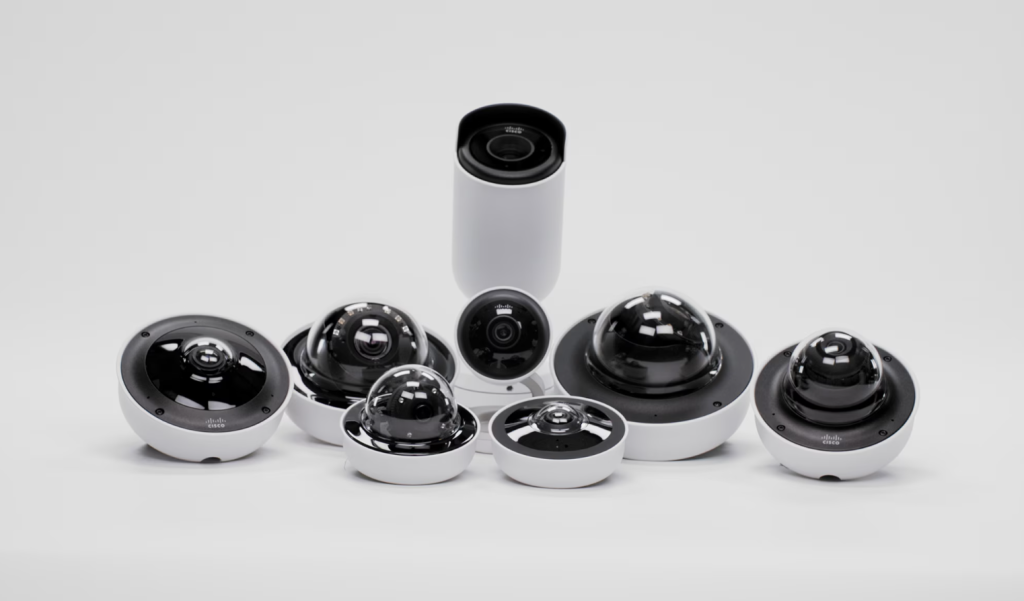Video surveillance has evolved beyond passive monitoring. With artificial intelligence built directly into smart cameras, businesses can now gain real-time insights into what’s happening across physical spaces. Object detection, once limited to lab environments or expensive analytics servers, is now accessible at scale thanks to Meraki MV cameras. These cloud-managed cameras perform real-time object detection at the edge, with zero added infrastructure or complexity.
Meraki MV cameras use onboard machine learning models to detect people and vehicles in live video streams. Instead of pushing full video to the cloud, they transmit lightweight metadata for analysis, saving bandwidth and streamlining operations. Retailers, corporate campuses, and logistics teams can use this capability to improve safety, analyze customer behavior, and optimize resource allocation. This article details how object detection works in Meraki MV cameras, how to deploy it effectively, and how to turn this data into real-world value.

Meraki MV cameras process object detection on-device. The onboard processor identifies people and vehicles using computer vision models, marking detected objects with bounding boxes in the camera view. These detections are logged and visualized in the Meraki dashboard, allowing teams to explore patterns without storing or reviewing video manually.
By transmitting only object metadata—not raw video—to the Meraki cloud, these cameras avoid network congestion and preserve privacy. Object detection results are organized by time, object type, and count, enabling admins to review occupancy levels, traffic peaks, and security anomalies.
Meraki continuously improves detection models through updates delivered automatically via the cloud. As a result, users benefit from hardware-accelerated computer vision and edge analytics without needing AI expertise or external software. All logic is built into the Meraki MV cameras, making intelligent video easy to deploy and scale.
Meraki MV cameras estimate occupancy by calculating the average number of people or vehicles in view during each minute. This allows users to monitor footfall or parking usage trends over time, rather than relying on momentary snapshots. For example, if ten people are visible for only a few seconds within a minute, the estimated count is adjusted to reflect true presence duration.
This metric pinpoints the busiest time of day based on object detection activity. By identifying when people or vehicles are most frequently detected, organizations can align staffing, lighting, or promotional strategies with actual behavior patterns. It’s especially useful in retail and facilities management, where peak usage directly impacts performance.
The Meraki dashboard shows how many distinct entry events occurred within a time window. Each time a person or vehicle enters the frame, it’s logged as an entrance—even if the same individual reappears after a temporary obstruction. This count is valuable for security and operations teams that need to track flow rates at access points.
Detection data is visualized through intuitive charts and motion heatmaps. Histograms break down detection counts by hour or day, while heatmaps overlay movement patterns on the camera view. These tools help uncover unusual activity, such as unexpected nighttime access, and assist with space planning by revealing heavily trafficked zones.
Applications
Retailers use Meraki MV cameras to track foot traffic, determine peak shopping hours, and analyze how customers interact with displays. Occupancy and entrance data help fine-tune store layouts, improve staffing efficiency, and measure campaign success. Object detection also supports loss prevention by flagging after-hours motion.
Facilities teams use object detection to assess how shared spaces like meeting rooms, cafeterias, or hallways are used throughout the day. By identifying patterns in occupancy and usage, businesses and schools can adjust HVAC, lighting, and custodial schedules for efficiency. In emergency planning, these insights support safety protocols and real-time decision-making.
Vehicle detection features in Meraki MV cameras enable teams to monitor loading dock traffic, detect unauthorized entry into restricted areas, and ensure equipment zones remain clear. Motion analytics can highlight congestion points in warehouse layouts and verify that procedures are being followed around heavy machinery.
Deploying Meraki MV cameras effectively requires attention to camera placement, angle, and environmental conditions. For people detection, cameras should be mounted at least 6 feet high—ideally over 10 feet—to capture a clear view of walking paths or queue areas. Indoor deployments should avoid harsh lighting changes or reflective surfaces, as these can reduce detection accuracy.
Entrances and intersections benefit from diagonal camera angles. This increases the duration objects remain in view, improving the consistency of object recognition. A side-facing view of a hallway, for example, performs better than a head-on angle at a doorway, where people may appear only briefly.
Vehicle detection needs outdoor-rated models, which are designed to handle extreme weather and temperature swings. For parking lots or garages, ensure even lighting and avoid placing cameras directly facing headlights, which may cause glare or obscure details.
Consistent lighting, minimal occlusion, and the right model selection are key to extracting accurate and reliable data from object detection features. Before permanent installation, always test camera placement by temporarily mounting the device and evaluating detection performance using real-time analytics tools available in the dashboard.
Meraki provides users with flexibility in object detection by offering default and experimental models. These can be selected within each camera’s MV Sense tab on the dashboard. Organizations can switch models based on use case or scene complexity, such as high foot traffic, occlusion-heavy zones, or specialized environments.
To evaluate detection accuracy, use analytics debug mode. This displays real-time data about object counts, bounding boxes, and detection confidence. During peak activity periods, observe how the camera identifies and tracks people or vehicles. Watch for false positives or missed detections that might indicate a need to adjust angle, lighting, or model version.
Make changes incrementally and re-test. Allow at least 1–2 hours of typical activity to generate a reliable sample size. This ensures that the object detection model delivers meaningful insights, especially in dynamic or crowded environments.

Object detection doesn’t live in isolation. With the MV Sense API, businesses can extract live detection metadata and feed it into other systems such as custom dashboards, CRM platforms, or building automation software. This turns Meraki MV cameras into live data engines that support decisions beyond security.
For example, foot traffic data can feed into a BI tool to compare store performance. Facilities teams can use real-time occupancy metrics to control HVAC systems based on actual presence, not pre-set schedules. With flexible API endpoints and cloud-first design, MV Sense makes it easy to extend the value of object detection across departments.
Object detection provides more than just security footage. By transforming motion into structured data, Meraki MV cameras reveal patterns that can improve business operations. From identifying crowded areas to spotting anomalies in activity, detection metrics allow teams to act based on facts rather than assumptions.
Because the cameras operate independently and require no local servers, businesses avoid the complexity and cost of traditional video analytics. Detection is processed at the edge, stored in the cloud, and accessible in real time—supporting agile, data-informed decisions across IT, security, operations, and marketing.
Selecting the right model ensures the best results. For indoor people detection, compact fixed-lens cameras like the MV22 or wide-angle options in the MV12 and MV32 series perform well in offices, schools, and stores.
For vehicle detection, outdoor-rated models such as the MV72 and MV63 are recommended. These cameras are weather-resistant, offer varifocal lenses, and deliver high accuracy in parking lots, loading docks, and drive-thru setups. Choosing the correct hardware ensures reliable performance and simplifies deployment planning.
Meraki MV cameras have redefined video surveillance by adding intelligence, simplicity, and actionable insights. With edge-based object detection, built-in analytics, and seamless cloud integration, organizations gain far more than footage—they gain a real-time, strategic view of how people and vehicles interact with physical space.
No servers, no extra tools, and no guesswork—just accurate data ready to fuel smarter decisions.
Stratus Information Systems helps you unlock the full potential of Meraki MV cameras. From selecting the right models to configuring object detection and integrating analytics, our team ensures every deployment meets your goals for security, efficiency, and business intelligence.
Contact us today to explore Meraki camera solutions that are ideal for your environment.

Continue Reading...